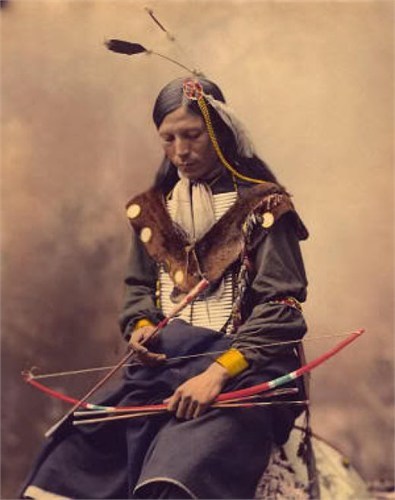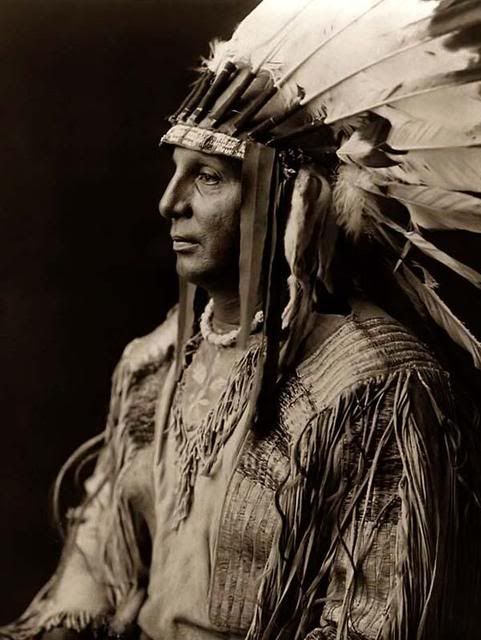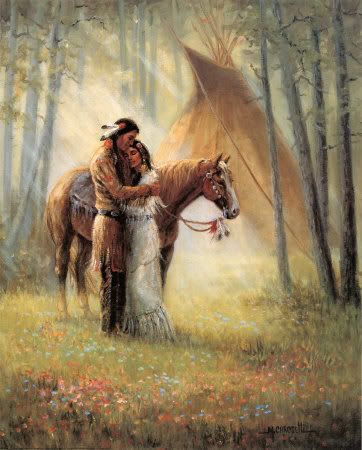.png)
In the days of the open range of the American wild west, it is said that cattlemen rounded up their livestock and marked them with a brand on the hides of the cattle with hot-red branding irons. The caustic smell of hair and flesh burning, the foul odor of the blood and manure, the lowing of cows being separated from calves, the yelling of the cowboys and the battle between man and beast in a very crude environment all remain part of a traditional ritual to this day. Like it was mentioned in class, all myths originated from a ritual. This holds true even in the history of cattlemen. It's a researched and studied fact that the act of branding livestock with fire-heated irons, placing a mark to identify ownership, originates even in ancient times, dating all the way back to the Egyptians. Inscriptions on the walls of ancient Egyptian tombs indicate that cattle were branded as early as 2000 B.C. The ancient Romans believed that the symbols used to brand were sometimes chosen as part of a magic spell, specifically aimed at protecting these creatures from harm. The Americans decided to adopt the custom of cattle branding from Mexico. Spanish conquistodors, vaqueros in the Spanish tradition, brought the practice from Mexico into California and the Southwest including Arizona, New Mexico and Texas during the late 1700's.
Not only are the calves branded when they are roped but they also receive their vaccinations, are castrated if they are bull calves, ear tagged, horns removed, etc., all done VERY quickly so that the calf can be reunited with it's mama as soon as possible to prevent further trama for the pair. This branding ritual when carried out properly is not cruel. Is it painful? Of course, but it's done with such speed and finesse that the calf hardly even knows what happened to it! True cowboys know how to handle cattle carefully with respect.
Today branding has become somewhat of a social event on many large ranches. It's usually done in the spring before the cow/calf pairs are turned out for summer grass. Ranchers from the area bring their families. Everyone brings their best horses, tack and they wear their best clothes, chinks, etc. Everyone joins in and they enjoy bar-b-que, visiting, with their neighbors and friends. It's a time for catching up with everybody and carrying on some great traditions. This cowboy ritual goes even deeper. There was even a code of honor associated with brands. The greatest ranches also had the best horses and the best cattle. Sometimes it took years of being on a waiting list just to get hired at one of the great ranches. If you were able to get a job working as a cowboy on one of the great ranches you were expected to ride carrying honor for the brand and to protect it with all of your heart and soul even to the point of life and death. Some of these great ranches are still in existence today, even in Montana. Although this is a very painful ritualistic way to keep track of your livestock herd safely, from my own experience of raising a herd of cattle, it is the most effective way that is still predominately used by cowboys as a continuous ritual that originated 4000 years ago.
Cattle, horses and many other livestock animals were not the only species to be branded. As far as we know today the history of branding even took place upon slaves/humans. People began using brands first upon other humans. The use of the letter "A" was branded into the forehead of an adulteress. Many different letters were used to brand humans to represent punishment to convicted criminals and even harmless wanderers. During the Tudor period of English history, vagabonds had the letter V burnt into the skin of their chests. Fray-makers in church, or trouble makers with no respect for holy space, received an F, the hard way. A British law in the reign of King William III ordered thieves to be branded on the left cheek. There were many different reasons used for branding humans. It seems to me though as if punishment was the common means to brand humans, especially slaves. However, branding humans to punish was not the only ritual used to brand. Human branding was also used in some cultures to represent passage into man-hood and woman-hood. Branding was also used by futurities, military like the Marine Corps, Spartacus even was branded as he rose up to fame. Gladiators such as him had their own claim to fame as Champions of the House of Batiatus. In a lot of ways humans/people wanted to be branded honorably to signify that they were an elite member of society.
As you can see, branding rituals have been used in many different ways throughout the ages. It's fascinating for such an ancient ritual as branding to still be in use today and still have an impact on our society. I am enamored to discover there are rituals within rituals like there are rituals associated with branding itself. It's amazing to me that rituals such as branding are still performed today much in the same way they were performed four thousand years ago! The more we change the more we stay the same.


